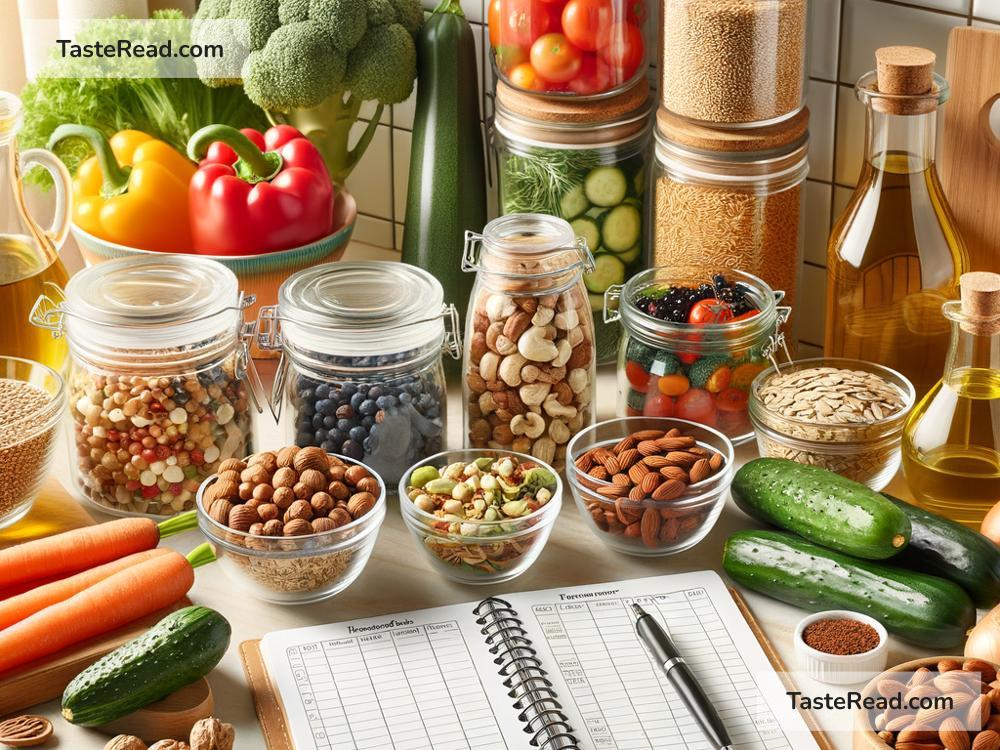How to Plan Meals for Optimal Phytostanol Intake
Eating healthy isn’t just about counting calories or avoiding junk food. It’s also about including foods that are known to provide specific health benefits. One such nutrient is phytostanols. These plant-based compounds are known for their ability to help lower cholesterol levels and promote heart health. If you’re wondering how to plan meals to maximize phytostanol intake, this article will explain everything in simple terms.
What Are Phytostanols?
Phytostanols belong to a group of nutrients called plant sterols, which naturally occur in vegetables, fruits, nuts, seeds, and cereals. They chemically resemble cholesterol, but unlike the cholesterol found in animal products, phytostanols actually block the absorption of cholesterol in your gut. This means that adding phytostanols to your meals can help reduce your LDL (“bad”) cholesterol levels and lower your risk of heart disease.
Why Should You Include Phytostanols in Your Diet?
Cholesterol is a fatty substance your body needs in small amounts, but having too much “bad” cholesterol in your bloodstream can cause artery blockage and increase the risk of heart-related problems. Phytostanols are known to lower LDL cholesterol by up to 10–15% when consumed regularly as part of a healthy diet. Plus, they’re natural and found in many common foods, making them an easy addition to your meal plans.
The Challenge: Finding Enough Phytostanols in Food
Although phytostanols are present in many plant-based foods, the amounts are usually small. To get significant cholesterol-lowering benefits, experts recommend consuming about 2 grams of phytostanols each day. To put that into perspective, you’d need to eat large quantities of certain foods, such as nuts or grains, to meet this target. That’s why food manufacturers often add phytostanols to certain products, such as fortified spreads or milk, to make it easier for people to include them in their diet.
Tips for Meal Planning for Optimal Phytostanol Intake
Now that you know why phytostanols are important, here are some practical tips to help you plan meals that include enough of them every day.
1. Start the Day with a Phytostanol-Enriched Breakfast
Breakfast is the perfect time to include phytostanols in your diet. You can choose fortified products, such as spreads or yogurts, that contain added phytostanols. Here’s an example of a heart-healthy breakfast:
– Whole-grain toast with phytostanol-enriched margarine
– Greek yogurt topped with nuts, seeds, and a drizzle of honey
– A piece of fresh fruit, such as an apple or an orange
This combination is not only rich in phytostanols but also gives you fiber and vitamins, which work together to support heart health.
2. Add Plant-Based Snacks to Your Day
Instead of reaching for chips or sugary snacks between meals, try munching on phytostanol-rich snacks. Nuts like almonds, walnuts, and pistachios contain small amounts of phytostanols. Pair them with seeds, such as sunflower or chia seeds, for an energy-boosting snack that keeps hunger at bay.
A great snack idea would be:
– A handful of mixed nuts and seeds
– Homemade trail mix with dried fruits and whole-grain cereal
– Sliced vegetables with hummus
3. Choose a Phytostanol-Focused Lunch
Lunch is another excellent opportunity to incorporate phytostanols. A salad made with leafy greens, avocado, and chickpeas is packed with nutrients and small amounts of phytostanols. You can also use phytostanol-enriched dressings or sprinkle sunflower seeds on top.
Here’s a sample lunch option:
– A hearty salad with spinach, tomatoes, cucumbers, chickpeas, avocado, and a light vinaigrette
– Whole-grain bread with phytostanol-enriched spread
– A piece of fruit for dessert
4. Include Phytostanols in Dinner
For dinner, focus on including vegetables and grains that naturally contain phytostanols. Sweet potatoes, brown rice, and asparagus are excellent options. You can also use phytostanol-enriched spreads in cooking or as a topping for baked dishes.
A simple dinner idea could be:
– Grilled salmon with a side of steamed asparagus
– Roasted sweet potatoes sprinkled with sesame seeds
– A small serving of quinoa or brown rice
5. Use Fortified Foods Wisely
Because it’s hard to get 2 grams of phytostanols from natural foods alone, fortified foods can be a lifesaver. Dairy products like milk or yogurt, spreads, and certain snack bars are often enriched with phytostanols. When shopping, look for labels that advertise added plant sterols or phytostanols.
Lifestyle Tips for Optimal Results
Eating phytostanols regularly is one part of the equation; the other includes adopting a heart-healthy lifestyle. Here are some tips to maximize the benefits:
– Eat a balanced diet with plenty of fruits, vegetables, whole grains, and lean proteins.
– Stay active with regular exercise to improve circulation and overall heart health.
– Avoid smoking and limit alcohol consumption.
The Bottom Line
Phytostanols are key to maintaining healthy cholesterol levels and supporting heart health. By planning your meals thoughtfully and incorporating foods that naturally contain phytostanols—as well as fortified products—you can easily reach the recommended daily intake of 2 grams. Start your day with a phytostanol-enriched breakfast, snack on nuts and seeds, enjoy salads and grain-based dishes for lunch and dinner, and use fortified foods strategically. Pair your diet with a healthy lifestyle, and you’ll be well on your way to protecting your heart and improving your overall well-being.
Try out these meal planning tips today, and let phytostanols take care of your heart!


